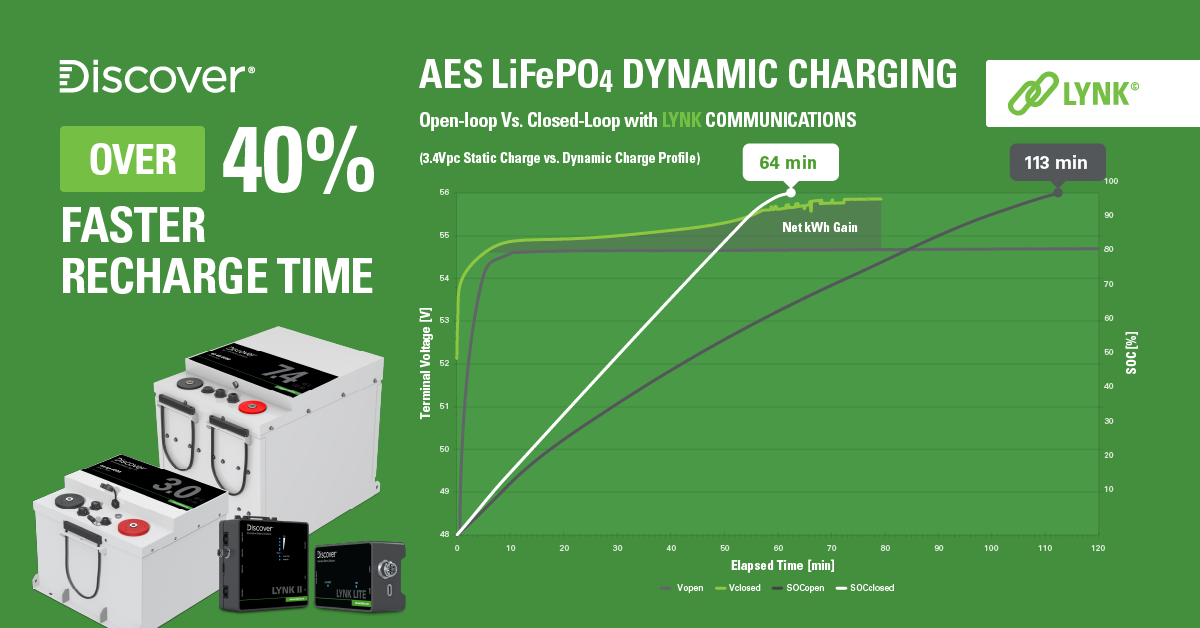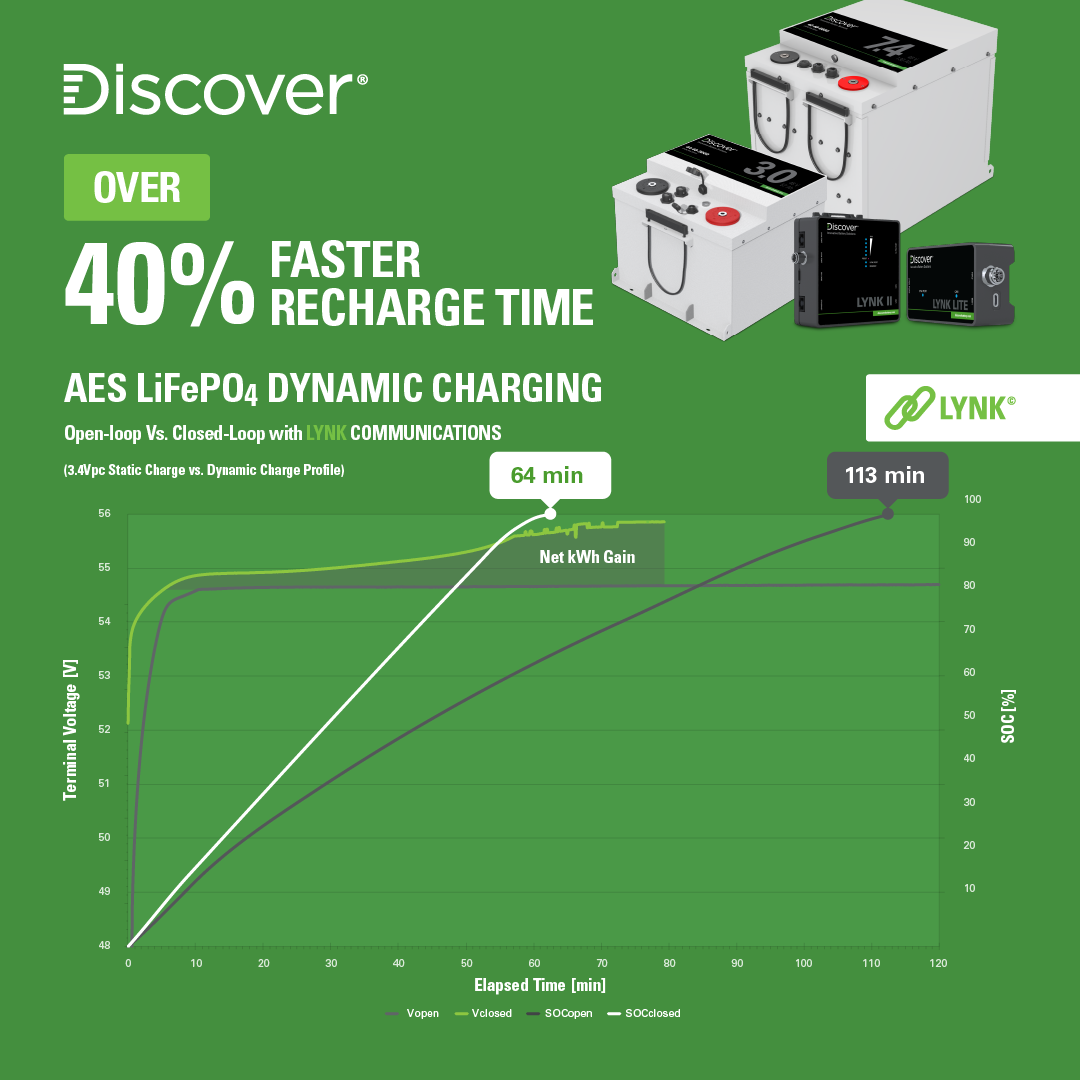
Fast charging is a crucial selling point for lithium battery adoption, and by now, most installers are aware that a lithium battery charges much faster than a lead-acid battery. The Lithium battery chemistry is much more efficient than lead-acid battery chemistry at discharging and accepting energy. But did you know that some Lithium batteries can be charged even faster than other Lithium batteries?
At Discover Battery, we use Dynamic Charging to characterize that extra bit of speed.
The BMS must have two key characteristics to charge the Lithium battery at the fastest possible rate. Firstly, it must be able to handle the acceptance of a high charge current without disconnecting the battery, which is the primary safety mechanism employed by the BMS. Typically, a charge rate of 1C is considered a high current rate. To put this in context, a Lithium battery charge rate acceptance of 1C current is twice the rate of 0.5C current (check the spec sheet of your battery to confirm its rate).
The BMS requires a second important capability, communication with the charging device, to take charging to the next level. Closed-loop communication is the key to safely delivering the FASTEST charge time possible. A top-notch BMS will safely and dynamically maximize the real time cell voltage a battery requires using closed-loop communication. For a practical example of this, consider that closed-loop communication will enable the voltage output of the charging device to overcome any voltage losses due to resistance in the cables leading to the battery.
Lead-acid batteries and lithium batteries without closed-loop communications cannot change the voltage they receive. They are set to a fixed charging algorithm which conservatively set up to account for all possible situations (high temperature etc). The charging process will therefore be inherently slower for these types of batteries.
Let’s look at a simple illustration of Dynamic Charging with our Discover AES LiFePO4 Solar Battery in both an open-loop and closed-loop system.

The white line on the graph is the line tracking battery state-of-charge using closed-loop communication, and the dark line tracks state-of-charge with the communication network disconnected and running in an open loop. The green line tracks voltage and clearly demonstrates the voltage being pushed higher by the charger due to communication with the battery – Dynamic Charging.
As we can see, the closed-loop system goes from 0% to 100% SoC in 64 minutes, compared with the open-loop system taking 114 minutes. Same battery, same inverter-charger, the same amount of energy replaced – Clearly, the closed-loop approach is faster.
Note: Battery used AES LifePO4 42-48-6650, Sol-Ark Inverter-Charger used.






